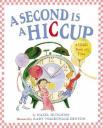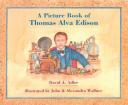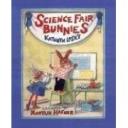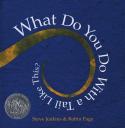
Fed up with Farmer Brown’s demands to pitch in and help with the farmyard chores, ambitious Duck decides things have to change, and so he proactively decides to stage an election to take charge. In Duck for President by author Doreen Cronin, Duck begins his ascent to great political heights one step at a time. Once he’s taken over the farm, he finds that it is hard work, so he then tries the governorship and wins. He again becomes restless and decides to run for President, and wins the presidential election. However, he finds that with great power comes greater and greater responsibilities – and headaches. “Running a country is no fun at all,” he remarks. The story concludes with Duck returning to the simpler life he once enjoyed on the farm, writing his autobiography.
As the ultimate “outsider” candidate in each of the elections, Duck demonstrates the principal that America is comprised of a great diversity of people (and animals), all of whom can make a contribution to their community. The story will doubtless resonate with young children who are all too familiar with hearing their parents ask them to help with household chores and wish to change things. Duck’s message is to stop complaining, make a stand, and help make a difference. However, Duck finds that it’s much harder work when you are given larger responsibilities. Throughout his rise to power, the book’s humorous treatment of the political process – voting, campaigning, tallying the ballots – gives young children an accessible look inside the electoral process and an understanding of the level of commitment needed to hold government office. Math skills are utilized throughout the text via tallies following each election.
Curriculum Connections
This book’s light treatment of the electoral process would make it a great introduction to civics for kindergartners, and would allow for an expansion of basic civics ideas for first and second graders. Kindergartners can get some simple insight into the political process (including some idea of how hard the president’s job is) (K.9), while first and second graders could build upon their existing knowledge of elections to understand more about the responsibilities of being in office, how candidates campaign, and the voting process (1.10, 2.10). First and second graders will also learn how people (or ducks, in this case) can make a difference in their communities (1.12c, 2.12).
Additional Resources
- Simon and Schuster’s Duck for President page features a wonderful campaign video that would be fun to show students in discussing how politicians use media to solicit votes. It also has links to Duck’s campaign flyer, poster, Duck quotes, activity sheets, ballots, and a letter to the voters.
- Kids.gov is the official kids’ portal for the U.S. Government, and has many activities and teaching guides (grades K – 8). Two links that would prove useful would be voter registration information and the duties and responsibilities of citizens.
- PBS Kids Go! The Democracy Project features two links, President for a Day and Step Inside the Voting Booth, that would be great additions to a civics discussion generated from reading this book.
General Information
Book: Duck for President
Author: Doreen Cronin
Illustrator: Betsy Lewin
Publisher: Atheneum
Publication date: 2008
Pages: 40 pages
Grade range: Kindergarten, First and Second Grades
ISBN: 0-1416958002









